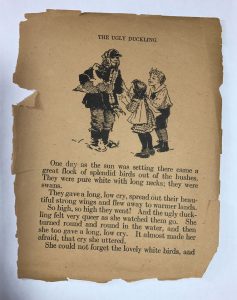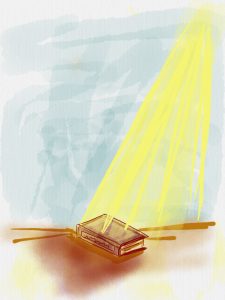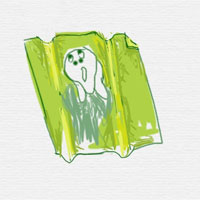In honor of Preservation Week, our Special Collections Conservator, Natalie Granados is sharing some of the work she does to ensure that all of our collections are getting the care and maintenance they deserve.
Temperature: What Is Damaging Your Collections?
Written by Natalie Granados (@natartlie). Special Collections Conservator – UConn Library.
On this post we’ll discuss temperature and how it affects your collection material. Knowing what causes common problems in books and paper will help you protect your treasures. Join me in this series covering common damages to paper and books such as handling, temperature, humidity, pests and pollution.
LET’S START WITH SOME SAD FACTS: It must be noted that the quality of the paper itself can be one of its causes of deterioration. Inherently acidic pulp, acidic inks, bleaching and unstable sizing all speed up degradation. Paper that presents these characteristics benefits from cold storage to slow down the chemical process causing the decay.
It must be noted that the quality of the paper itself can be one of its causes of deterioration. Inherently acidic pulp, acidic inks, bleaching and unstable sizing all speed up degradation. Paper that presents these characteristics benefits from cold storage to slow down the chemical process causing the decay.
CHEMICAL DAMAGE
The unseen changes within paper is what concerns conservators. Hydrolysis and oxidation being the big bad wolves in this scenario.

Hydrolysis is a chemical reaction between a substance and water, resulting in the breakdown of the original substance and the formation of one or more new substances. In paper, acid hydrolysis is a continuous process that decreases flexibility and increases the susceptibility to damage of the object. Because the activity itself creates acid, the damage will increase as the process progresses.
Oxidation is a reaction between a substance and oxygen, resulting in physical breakdown. It can be caused by light, heat or pollutants and it leads to discoloration (yellowing) of paper.
 TEMPERATURE
TEMPERATURE
Library and archive materials respond to temperature by expanding in heat and contracting in cold. Heat accelerates damage, causes permanent distortion, cracking, change of sheen and melting of adhesives and paint. In addition, insects reproduce faster and eat more at higher temperatures.
Alas, very cold temperatures are not any better. These can make paper liable to break easily, crack or flake. Extreme variations can also be a problem. Extremes that occur faster than the paper’s rate of adjustment can lead to cockling, wrinkling, and planar distortions as well as cracking of emulsions on photograph.
 GOT IT. NOW WHAT TEMPERATURE PARAMETERS SHOULD I BE LOOKING AT?
GOT IT. NOW WHAT TEMPERATURE PARAMETERS SHOULD I BE LOOKING AT?
Glad you asked, the recommended temperature for spaces where human comfort is a factor is between 60-77°F. For storage of paper records with only occasional retrieval,a constant temperature within the range from deep freeze to about 64°F would be suitable as per the National Information Standards Organization (NISO) Environmental Guidelines for The Storage of Paper Records. For film and color photographic material, a suggested temperature of 35°F or below has been stated.
